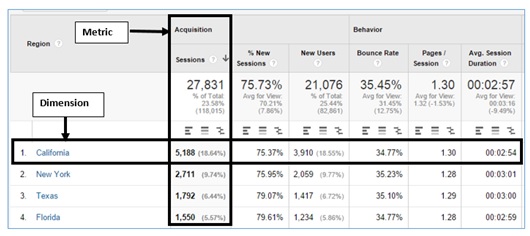Google Analytics: Essentials - Part 2 - Terms
 Photo by Lukas Blazek on Unsplash
Photo by Lukas Blazek on Unsplash
Terms
- Session
- Users
- Pageviews
- Bounce
- Exit
- Events
- Landing page
- Filter
- Segments
- Metrics
- Dimension
- Conversion
PS: This terms are most of time referring to a time period or a time frame depending on what your default or selected date range is on the GA dashboard.
Session
The duration spent of a user on your website. After 30 minutes of inactivity the session will be counted as a new one. It is possible that a single user can have multiple sessions and that is why session count will always be larger than the users count.
User
An individual/visitor/audience with at least one session on a given time period.
Pageviews
An occurence of a page being loaded or reloaded (refreshed).
Bounce
Percentage measurement of your audience viewing a single page and did not trigger any events. The lower the better but this is not always the case as website types (blog, ecommerce, SaaS, landing pages) are designed diffently. For example, a blog site might have a high bounce rate since there are less interation unlike an e-commerce site which probably have buttons for description, adding to cart, etc.
Exit
Unlike the bounce where a user did not view another page, exit rate is where they have viewed another content on your site and left. Exit rates are not much of a concern except maybe for like a cart page. A cart page having a high exit rate is of a concern since this is supposed to be the page you convert a customer and not leave your site when they see one. On the other hand, a thank you page is expected to have a high exit rate.
Events
Interactions on your website that is beyond the page load or refresh. This events are what happens after the page is loaded like clicking a link, submitting a form or played a media ( video/audio ) embedded on your page.
Landing Page
Not to be confused with a marketing term with a similar term. This is the first page an audience viewed or also known as the “entrance page”.
Filter
A setting configuration in which you may modify, add or remove during the processing of yor data before it is presented in one of your reports. It is applied during data collection and is not retroactive, means that only when you applied the filter will the data be collected in point in time.
Segments
Personally, before learning the difference between filter and segments was I thought I was doing was “filtering” data on my GA dashboard. Segmenting is like breaking down into chunks of data into a more manageable report per your requirements.
read more about segments vs filter
Metrics
 Image from optimizesmart.com
Image from optimizesmart.com
Metrics are quantitative measurements.
Dimensions
A descriptive attribute or characteristic of data.
Conversion
Simply put this as from an audience to a paying customer or a subscriber. If your site has a goal to attract a visitor into what you like them to action then it means you have made a conversion.